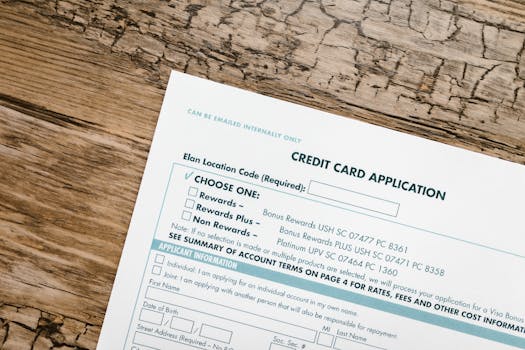Personal finance
How to Review and Adjust Your Finances Every Quarter for Real Progress
Start a quarterly review finances routine that works. Adjust budgets, track spending, and update goals with real-life examples, simple checklists, and expert guidance for steady money progress.
Advertisement
Catching problematic money habits early changes everything. Giving yourself time every few months to review finances lets you gain clarity, catch small snags, and keep control. Few routines provide such lasting benefits for so little effort.
People who check in with their budgets and accounts each quarter spot patterns sooner. This habit not only protects your bank balance but helps you grow more confident in money-related decisions year after year. This effort always pays off over time.
Set aside distractions, grab your favorite beverage, and get ready to dive into reliable tactics for financial checkups. By exploring these practical steps, you can make reviewing and adjusting your finances a straightforward, rewarding part of your life.
Checking Account Balances Sets Your Financial Baseline Each Quarter
Start your quarterly review by pulling up your checking, savings, and investment account balances. This step gives you a full, honest snapshot of where you stand right now.
When you know each balance, you can spot trends that reveal what needs tweaking. A positive or negative change opens the conversation: what is working and what needs your attention?
Uncovering Patterns Through Balance Comparison
Compare this quarter’s totals to the last. Watch for steady improvements, sudden dips, or unexplained shifts. It might feel like reading tea leaves, but numbers tell their own story.
Say your emergency fund grew but your checking account shrank. You’ll quickly know you moved funds, planned or not, so you can decide if that aligns with your priorities.
Some patterns suggest seasonal habits, like higher travel expenses in summer. Adjust next quarter’s strategy to build in that extra flexibility so surprises cost you less stress.
Spotting Mistakes and Fraud Early
Walk through your account statements line by line and verify all charges. This deters mistakes or unauthorized transactions from eating away at your savings.
If you see unfamiliar charges—a recurring subscription, a double-payment, or a missing deposit—raise a flag. Contact your financial institution quickly to solve the problem while details are fresh.
Even a small error corrected now will boost confidence in your review finances routine. Stay alert and act fast to keep your accounts in good standing between quarters.
| Balance Type | What to Check | Helpful Tool | Takeaway |
|---|---|---|---|
| Checking | Recent deposits and withdrawals | Online statements | Spot transfer errors and cash flow gaps |
| Savings | Growth since last review | Savings tracker app | See if you’re building your emergency cushion |
| Investment | Quarterly gains/losses | Brokerage dashboard | Evaluate if asset allocation matches your goals |
| Credit Card | Outstanding balance & interest | Monthly e-statements | Control debt before it snowballs |
| Retirement | Contribution progress | Employer portal | Stay on track for long-term goals |
Comparing Quarterly Spending Highlights Waste and Reveals Priorities
Lay your current quarter’s spending side by side with previous months. Total up categories such as food, utilities, subscriptions, and recreation. These numbers cut through assumptions and show your true behavior.
Sudden jumps, especially in areas meant to stay stable, signal that it’s time to dig deeper. Now’s your chance to align spending with what matters most—before lifestyle inflation creeps in.
Making Use of Category Breakdowns
Break your quarterly expenses into common categories. Spreadsheets or budgeting apps can auto-sort this for you. Focus on categories where spending changed most since the last review finances session.
If streaming subscriptions leapt by $75, list them by name. Check for ones you forgot or rarely use. People often nod along and just keep paying without realizing the extras add up.
- Scan credit card bills for duplicate charges. Fixing these right away saves money and frustration the next quarter.
- Group spending by need: essentials, wants, and savings. This places numbers in perspective, showing where cuts or boosts can happen painlessly.
- Sort entertainment and eating out separately. Seeing these costs clearly can motivate simple swaps for healthier spending habits.
- Flag recurring annual fees you’ve forgotten. Cancel unused memberships or services now, so you don’t pay another year.
- List all subscription apps and services. Decide which ones bring value, and cut the rest to reclaim your cash flow control.
After this exercise, return to your total budget with better judgment. Clear away what drags you down, and let the next quarter reward your fresher, sharper budget approach.
Tuning Up Your Discretionary Spending
Circle the few purchases each quarter that genuinely improved your daily life. Make a note to protect space for these next time you review finances. Small splurges should support your well-being, not cause extra stress.
Scrutinize impulse buys or snacks you didn’t even remember. While one-off treats can be harmless, unchecked habits become silent budget busters. Make a realistic commitment for the next quarter: one coffee out per week, not three.
- Let go of outgrown hobbies—stop buying supplies for interests that faded. Use those funds for new goals or pressing needs instead.
- Revisit streaming apps quarterly. Stick with one or two favorites, and pause the rest until you miss them.
- Designate a monthly treat budget. Limiting luxuries builds discipline and makes the things you indulge in feel more special.
- Carpool or batch errands to cut weekly transportation costs. Plan ahead to avoid repeat trips or unnecessary rideshare fees.
- Pack lunches again if takeout expenses climbed. Even one homemade meal per week adds up to big annual savings by your next review finances session.
Every quarter, budget for what you love and cut what you’ve outgrown. Each change sharpens your alignment of money with real happiness and future growth.
Setting and Rebalancing Short-Term Financial Goals Boosts Accountability
Quarterly reviews strengthen your commitment to financial progress. Write your top three money goals for the next three months. When you return to review finances later, measure progress and tweak steps for better results.
Aligning Milestones With Current Reality
Adjust short-term goals to actual numbers from your most recent quarter. For example, update your emergency fund target after reviewing new expenses or income changes.
If your savings slowed, brainstorm new routes—side gigs, selling unused items, or a fixed auto-transfer—to accelerate efforts by next quarter.
Finish this goal-setting session by writing a brief mission statement: “By next quarter, I will save $300 for emergencies and reduce my monthly streaming expenses by $30.” This makes progress tangible and keeps you on track.
Keeping Goal-Tracking Tactics Simple
Create a habit tracker or calendar alert to remind yourself to check progress each month, not just during review finances sessions. Regular reminders break bigger goals into bite-size wins.
Tell a friend about your quarterly goals. Sharing your intentions builds accountability and often brings in creative solutions you hadn’t considered on your own.
Set a visual progress cue—like printing a savings thermometer—on your fridge or phone. Every time you see it, you’ll remember what you’re working toward, making your quarterly goals feel alive.
Adjusting Budget Categories When Life Changes Keeps You Agile
Major life changes—new job, move, growing family—demand immediate tweaks. Review finances to update income, recurring bills, and planned savings.
Routines that ignore big transitions set you up for surprise shortfalls or missed opportunities. Respond swiftly for better control and less stress next time circumstances shift.
Prompt Updates After Significant Events
Raise budgeted grocery or utility amounts after a home move or family expansion. Even $30 more each month prevents last-minute scrambles when receipts climb.
Immediately subtract paid-off debts or canceled services from your expenses. Move this freed-up money to your next financial goal or use it to boost savings before you get used to it.
If you switch jobs and salary changes, recalculate your 401(k) or retirement contributions that week. Ensure pre-tax deductions reflect your new situation without waiting for quarterly reviews to fix a shortfall.
Using Calendar-Based Alerts for Adaptation
Add calendar alerts tied to seasonal bills, such as property taxes, summer camps, or holiday gifts. Reviewing finances before these spikes ensures you’re never caught off guard.
Color-code categories in your budget for easy adjustments. Visibly flag anything that’s changed—orange for new, green for decreased, red for increased—so your next review finances session goes faster.
Snap a quick photo of paper bills or note new recurring costs on your phone. Having digital reminders or visuals prompts faster action, keeping your records up to date in real time.
Committing to Regular Reviews Creates Financial Confidence and Freedom
Every quarter, taking time to review finances provides clarity, exposes opportunities and risks, and keeps your progress front and center. Tweaking your approach every three months keeps you nimble and focused on long-term goals.
This discipline turns money habits that once felt overwhelming into manageable, familiar check-ins. The more comfortable you grow with review finances routines, the easier it becomes to spot what needs attention right away.
Return to these steps each quarter, and your finances will get easier to manage with each review. Financial security builds slowly, but consistent action means the results are always worth it. Let your next review finances session start today.





